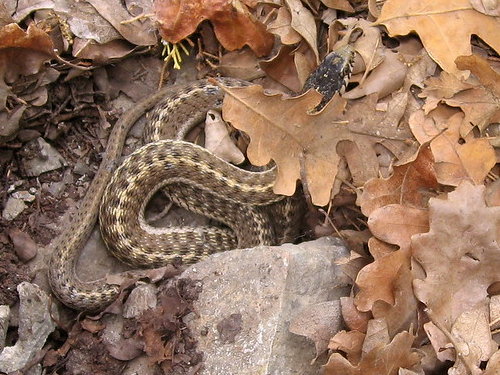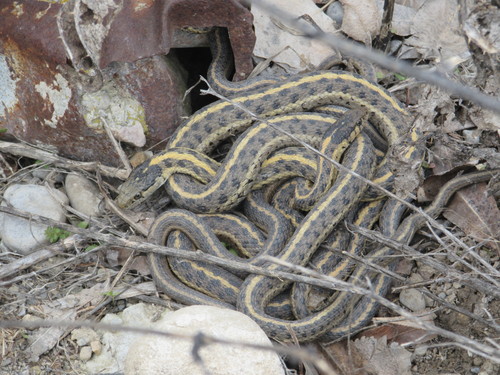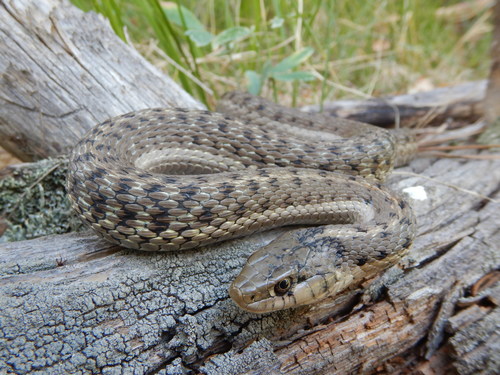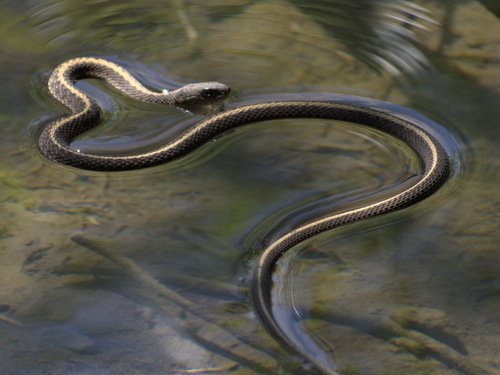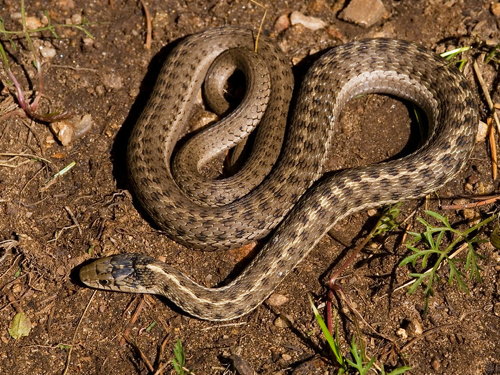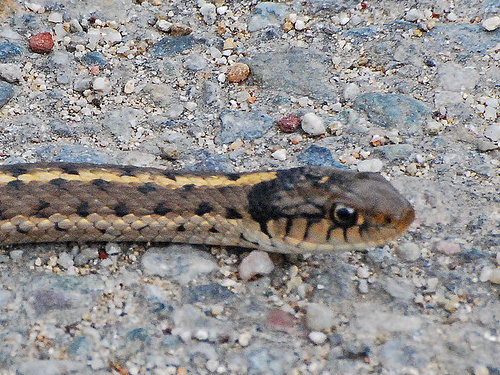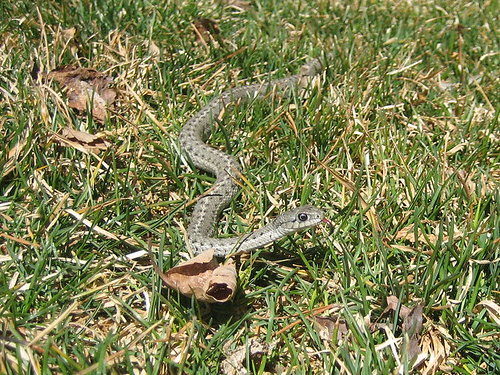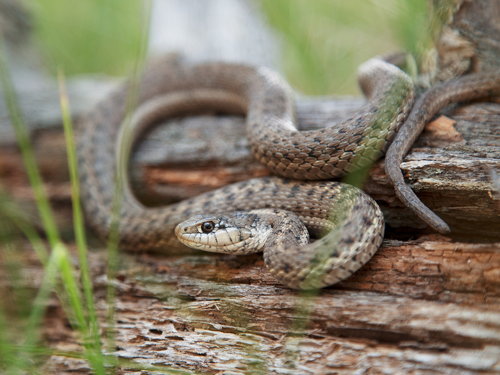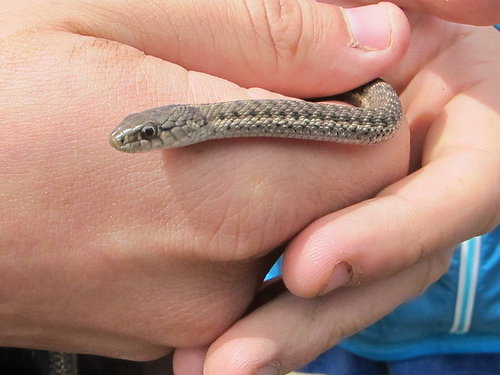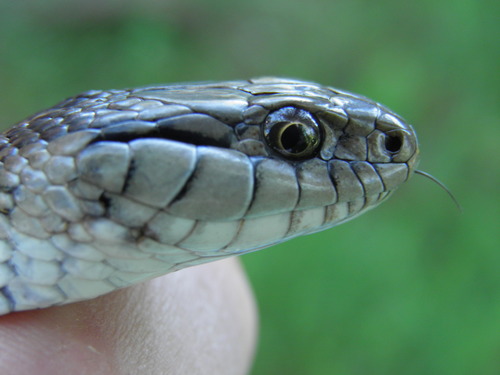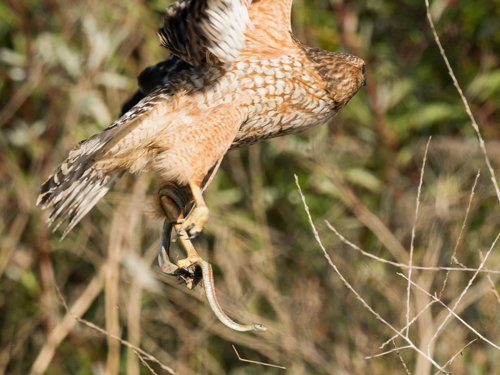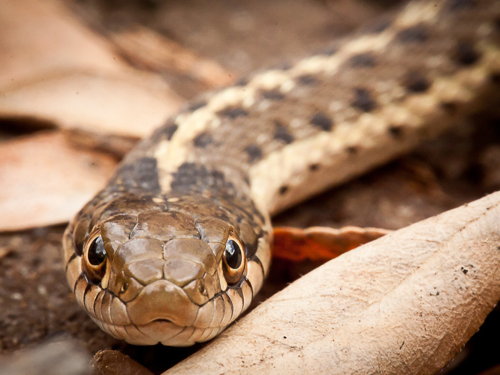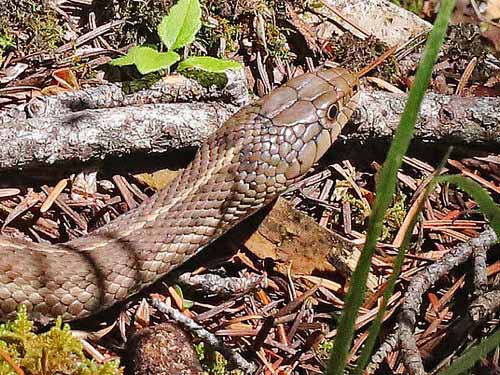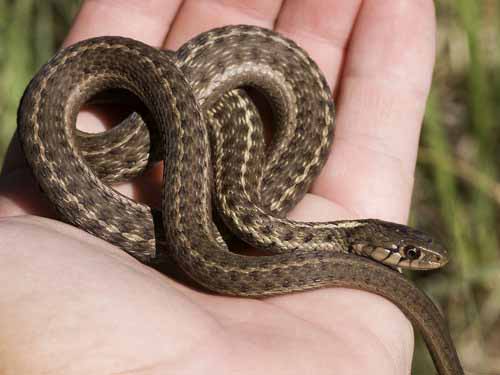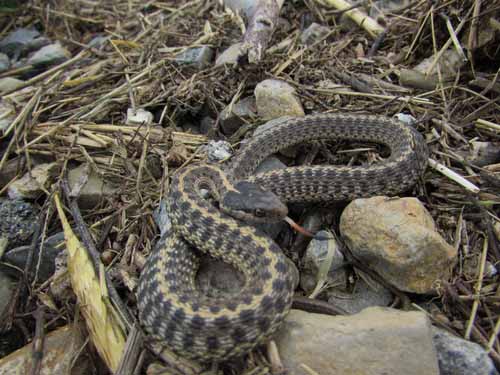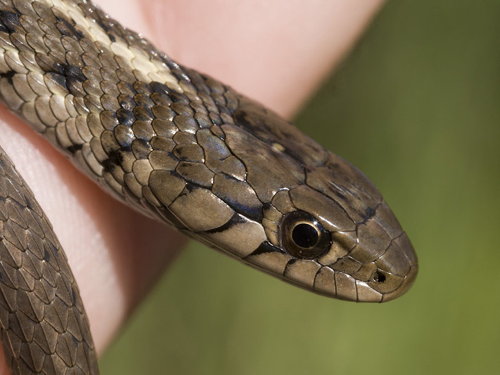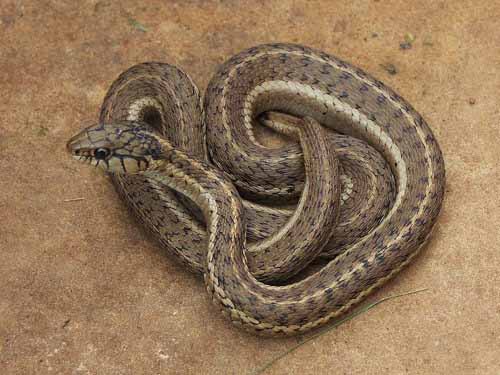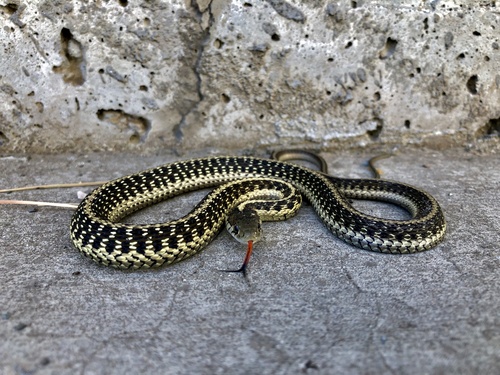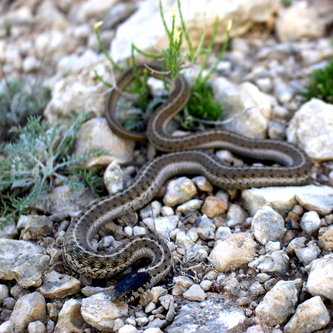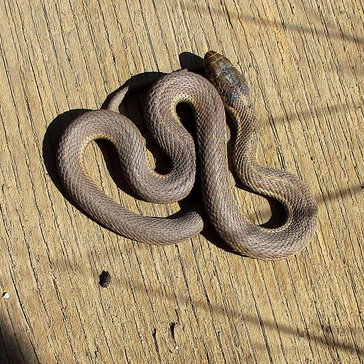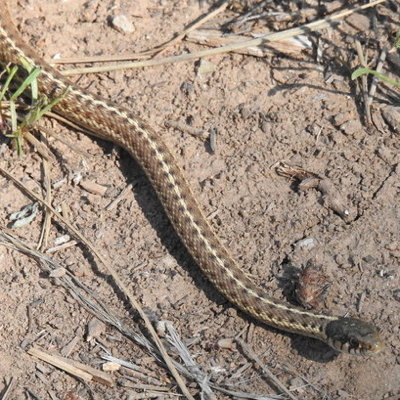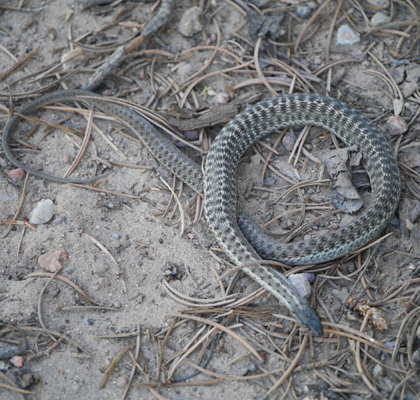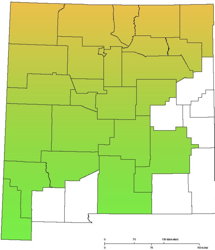Western Terrestrial Garter Snake
Scientific name: Thamnophis elegans
Type: Reptitle
Family: Colubridae (Advanced Snakes)
Size: 18 to 43 inches length
Weight: approximately 5.3 ounces
Life Span: 2 years in wild; 6 in captivity
Physical Description
The Western terrestrial garter snakes are a very variable species making it hard for even experts to identify without trouble, often requiring scale counts of particular areas for definitive identification. However, most have three stripes (yellow, orange, or white), one down the back and two along each of the sides. A garter snake’s overall color tends to be black, brown, greenish, or gray with a paler, often yellow, belly with the head a darker color. There are even occasional all-black variants.
Six subspecies of Western terrestrial garter snake have been identified, although validity of some are still in question. The subspecies in the local area is Thamnophis elegans vagrans with the common name of the Wandering Garter Snake.
Some of the Color Variants of the Western Terrestrial Garter Snake Found in Northern New Mexico
Range and Habitat
The Western terrestrial garter snake has a range from northern Mexico to central and southern Canada. In the US, these snakes can be found from New Mexico to western Oklahoma and Nebraska, through the Dakotas and west to the Pacific Coast.
Western terrestrial garter snakes are often found in deserts, plains, mountains, meadows, and forests. During hibernation, they tend to inhabit rocky areas. They are also tend to be near or in water around lakes or streams. They live at elevations up to 13,000 feet.
Diet
Western terrestrial garter snakes primarily eat slugs, worms, snails, leeches, tadpoles, frogs, fish, mice, and occasionally small birds. They will also eat insects and carrion. Garter snakes will get a firm hold on their prey and then bite it. The venom in their saliva paralyzes the prey and allows the snake to swallow the prey whole.
Eating
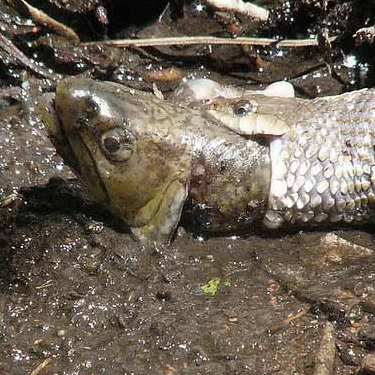
Just Eaten

Behavior and Social Life
Typically terrestrial garter snakes spend their mornings warming up in the sun. Once warmed up, they spend time hunting during the day and return to shelter in the evening before the temperatures drop too low. They will also shelter away from the sun with it gets too hot in the summer. They hibernate communally during winter in deep burrows or cracks in rock piles, coming out to bask on rocks when the weather is warmer. However, they are solitary during the rest of the year.
These snakes have well-developed senses of taste and smell but poor eyesight. They can sense vibrations, but it is unclear if they hear well. Cryptic coloration helps them to blend into their surroundings and avoid predation. However, when threatened, they will secrete a foul-smelling chemical that they rub over themselves and the predator if in close contact.
Up Close
Life Cycle
Adults will stop eating for several weeks before they mate. Mating typically occurs in spring, soon after the snakes have emerged from hibernation. Females produce a sex-specific pheromone that attracts male snakes in large numbers and leading to fierce competition among the males.
Gestation time is 2 to 3 months. Females give birth to live young after retaining up to 20 eggs in their bodies. The young are usually born in August and early September. Once the female gives birth, the young are left to fend for themselves. They will be mature at 2 years of age.
Mating
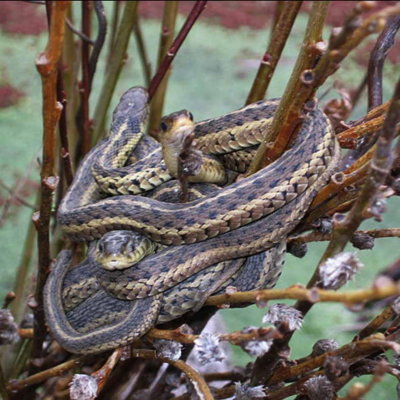
Juvenile
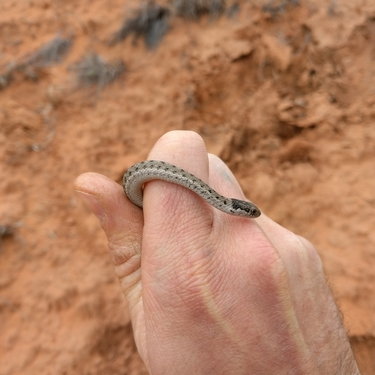
Ecological Role
Western terrestrial garter snakes feed on a variety of small reptiles and mammals, and sometimes even fish, keeping populations in check. In turn, they are hunted upon by predatory birds and mammals such as raccoons.
Interactions With Humans
Western terrestrial garter snakes eat many small mammals that are considered pests by humans. They will bite if handled. In humans, the mild venom in their saliva usually only causes a minor irritation at the site of the bite.
Interesting Facts
- Garter snakes are the most common snakes in North America.
- There are about 75 species and subspecies of garter snakes in North America.
- Garter snakes are also known as garden snakes, gardener snakes, and grass snakes.
- Adult females are larger than adult males.
- Sometimes thousands of garters will hibernate in the same den.
- Western terrestrial garter snakes spread the toxins in their saliva by chewing on prey.
- Female garter snakes are able to store the male’s sperm for years before fertilization.

